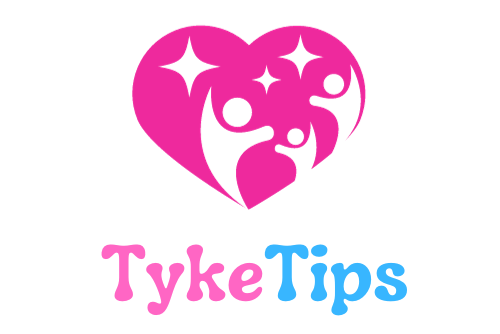Hi there! My name is Ashley, and I’m a mom of two little girls, Kylie and Mia. I wanted to share with you my recent visit to IKEA, where I explored trays and baskets that can be used for practical life activities and storage at home. In this video series, I provide suggestions on how to use different materials, such as wood, plastic, metal, and natural materials, for various Montessori-inspired activities. I also mention affiliate links and make it clear that the content is not intended for children, but rather for parents seeking ideas aligned with Montessori parenting principles. If you’re interested in creating a Montessori environment at home, stay tuned for more videos coming soon! Feel free to give this video a thumbs up if you found it helpful, and consider subscribing to my channel for more practical tips and advice. Thanks for watching!
I. Introduction
Welcome to our comprehensive article on incorporating Montessori principles into your home! In this article, we will explore the concept of Montessori at home, the importance of practical life activities, and how to create Montessori spaces using trays and baskets from IKEA. We will also provide recommendations from IKEA and examples of practical life activities to get you started. Whether you’re a parent or caregiver, this article aims to offer you valuable ideas aligned with Montessori parenting principles. So, let’s dive in and discover the wonderful world of Montessori at home!
II. Overview of Montessori at Home
Montessori at home refers to the application of the Montessori educational philosophy in a home environment. Developed by Italian physician and educator Maria Montessori, the Montessori method emphasizes independence, freedom within limits, and hands-on learning. At home, parents can create a Montessori-inspired environment that encourages their child’s natural curiosity, self-discipline, and love for learning. By incorporating Montessori principles and materials into daily activities, parents can promote their child’s cognitive, physical, and emotional development.
III. Importance of Practical Life Activities
Practical life activities are an essential component of the Montessori method. These activities are designed to develop a child’s concentration, coordination, and independence. Practical life activities include tasks such as pouring, sorting, and cleaning, which mimic everyday tasks and contribute to the child’s overall development. Engaging in practical life activities at home not only helps children develop important life skills but also fosters a sense of responsibility and self-confidence.
IV. Exploring Montessori Trays

A. Types of Montessori Trays
When it comes to Montessori trays, there are various options available. Wooden trays, such as those found at IKEA, are a popular choice due to their durability and natural aesthetic. Plastic trays can also be suitable, especially for activities involving water, as they are easy to clean and prevent water damage. Additionally, metal trays and trays made from natural materials, like wicker or bamboo, offer unique textures and visual appeal.
B. Materials Used in Montessori Trays
Montessori trays can be made from a variety of materials. Wood is often favored for its organic feel and durability. It provides a sensory experience and connects children to nature. Plastic trays, on the other hand, are lightweight and easy to clean, making them suitable for practical life activities involving liquids. Metal trays offer a sleek and modern look, while natural materials like wicker or bamboo add a touch of rustic charm to the learning environment.
C. Benefits of Using Montessori Trays
Using Montessori trays for activities has several benefits. First, trays define a specific work area, helping children focus and maintain concentration. They provide structure and order, which aligns with the Montessori philosophy of creating an organized and inviting environment. Trays also allow for easy cleanup, as materials and activities can be neatly contained within the tray. Lastly, trays provide a sense of ownership and independence, as children can select and carry their activities to their desired work area.
D. Practical Life Activities with Montessori Trays
Montessori trays are versatile tools for a wide range of practical life activities. For pouring and transferring activities, such as pouring water between containers or transferring dry ingredients, trays provide a controlled space for children to develop their fine motor skills. Sorting and organizing activities, like sorting objects by color or size, can be facilitated with the help of trays. Children can use trays for spooning and scooping activities, such as transferring rice or beans using a spoon or scoop. Trays can also be used for lacing and threading exercises, where children practice threading strings through objects with holes. Lastly, trays can aid in buttoning and zipping activities, allowing children to practice fastening buttons or zippers.
V. Utilizing Montessori Baskets
A. Different Types of Montessori Baskets
Montessori baskets come in various shapes, sizes, and materials, offering flexibility and creativity in organizing and storing materials. There are metal wire baskets with wooden handles, which provide a sturdy option for children to carry and transport materials. Plastic baskets are lightweight and easy to clean, making them suitable for organizing smaller items. Baskets made from natural materials, such as woven baskets, have a warm and inviting aesthetic that complements the Montessori philosophy.
B. Advantages of Montessori Baskets
Montessori baskets offer several advantages for organizing and storing materials in a Montessori environment. They provide a designated space for each activity, allowing children to easily locate and select materials independently. Baskets also promote order and organization, as items can be neatly arranged within them. Additionally, baskets made from natural materials enhance the sensory experience for children and add a touch of nature to the learning environment.
C. Incorporating Montessori Baskets in Shelf Work
Montessori baskets are ideal for integrating into shelf work activities. By placing materials in baskets, children can easily access and return them to their designated spots on the shelf. Baskets help maintain order and allow for a visually pleasing display of materials. Children can select the basket they wish to work with, carry it to their desired work area, and return it to the shelf once they have completed the activity. Baskets create a sense of ownership and responsibility, as children are actively involved in managing their materials.
D. Out of Rotation Storage Solutions using Montessori Baskets
Montessori baskets also serve as excellent storage solutions for materials that are temporarily out of rotation. When introducing new activities or rotating materials, baskets can be used to store items that are not currently being used. By labeling the baskets or arranging them in a specific order, parents can easily locate and retrieve materials when it’s time to reintroduce them. Out of rotation storage using Montessori baskets promotes organization and simplifies the process of rotating materials to maintain a stimulating learning environment.
VI. Recommendations from IKEA
IKEA offers a wide range of trays and baskets that can be used for Montessori activities and storage. For wooden trays, IKEA has options in different sizes, some with handles and others with a small lip around the edge. Plastic trays are also available, including small melamine trays that are perfect for practical life activities involving water. Moreso, IKEA provides metal wire baskets with wooden handles, smaller plastic baskets for shelf work, and various options for baskets made from natural materials like wicker. IKEA also offers out of rotation storage solutions, such as wooden chests of drawers and plastic storage boxes with lids. With IKEA’s diverse range of trays and baskets, parents can easily find suitable materials to create Montessori-inspired spaces at home.
VII. Examples of Practical Life Activities
A. Pouring and Transferring
One example of a practical life activity is pouring and transferring. This activity involves pouring water or other liquids between containers or transferring dry ingredients, such as rice or beans, from one container to another. Children can use a tray to contain the materials and minimize spills. By practicing pouring and transferring, children develop their hand-eye coordination, fine motor skills, and sense of concentration.
B. Sorting and Organizing
Sorting and organizing activities are excellent for developing a child’s cognitive skills and visual discrimination. Children can sort objects by attributes such as color, size, or shape. Using a tray, children can place the objects into their designated compartments or sections. This activity enhances a child’s ability to categorize and recognize patterns, while also fostering a sense of order and organization.
C. Spooning and Scooping
Spooning and scooping activities promote the development of a child’s fine motor skills and hand dexterity. Using a tray, children can practice transferring rice, beans, or other small objects using a spoon or scoop. This activity requires precision and control, allowing children to refine their hand movements and hand-eye coordination.
D. Lacing and Threading
Lacing and threading activities are excellent for developing a child’s hand-eye coordination and fine motor skills. Children can use a tray to contain objects with holes, such as beads or wooden shapes, and thread strings or shoelaces through them. This activity encourages concentration, patience, and the development of pincer grip.
E. Buttoning and Zipping
Buttoning and zipping activities are practical life skills that children can practice using trays. Children can button buttons or zip zippers on fabric pieces or dressing frames, allowing them to refine their fine motor skills and hand-eye coordination. This activity promotes independence and self-care skills, as children learn to dress themselves.
VIII. Tips for Creating Montessori Spaces at Home
Creating Montessori spaces at home can be a fun and rewarding experience. Here are some tips to get you started:
- Designate specific areas for different activities, such as a reading corner, an art station, and a practical life area.
- Use low shelves or bookcases to display materials and activities at the child’s eye level, promoting independence and easy accessibility.
- Label shelves and baskets with pictures or words to facilitate organization and promote literacy skills.
- Incorporate natural materials, such as wooden trays and woven baskets, to create a warm and inviting atmosphere.
- Rotate materials periodically to maintain interest and provide new learning opportunities.
- Involve children in the process of setting up and maintaining their Montessori spaces, fostering a sense of ownership and responsibility.
- Observe and follow your child’s interests and abilities when selecting activities and materials, allowing for individualized learning experiences.
IX. Conclusion
In conclusion, implementing Montessori principles in your home can provide a rich learning environment for your child. Practical life activities and the use of Montessori trays and baskets from IKEA can enhance your child’s cognitive, physical, and emotional development. By incorporating these elements, you are fostering your child’s independence, self-confidence, and love for learning. Remember to create designated spaces, promote organization, and involve your child in the process. With these tips and ideas in mind, you are well on your way to creating a Montessori-inspired home that nurtures your child’s growth and development.

